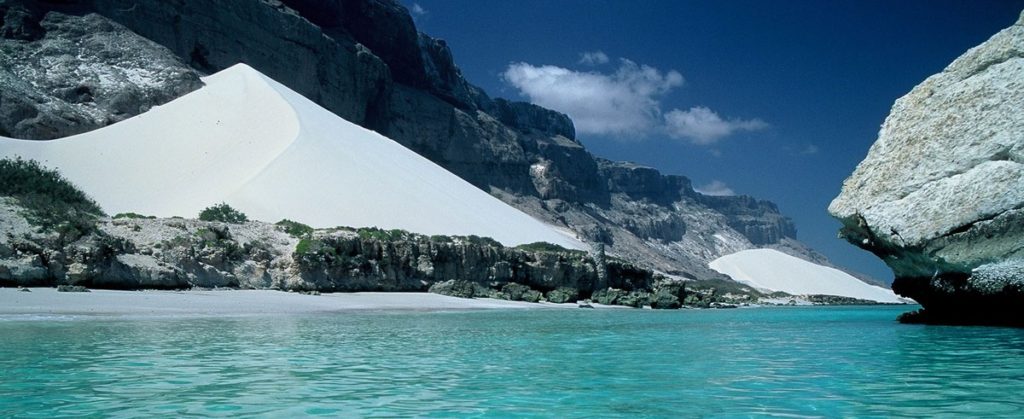
Socotra is a natural paradise of mountains, white sands and transparent waters that, thanks to the value of its natural resources, earned the title of world heritage since 2008.
Socotra lies in the Arabian Sea, off the Horn of Africa, and is the main island in a small archipelago of the same name. Unlike most other remote islands, which are the result of volcanic activity, its origin is continental – it split from Africa some 6 million years ago. This spawned a great biological diversity, and Socotra is a botanical paradise. Around 800 plant species can be found here – over a third of which are endemic.
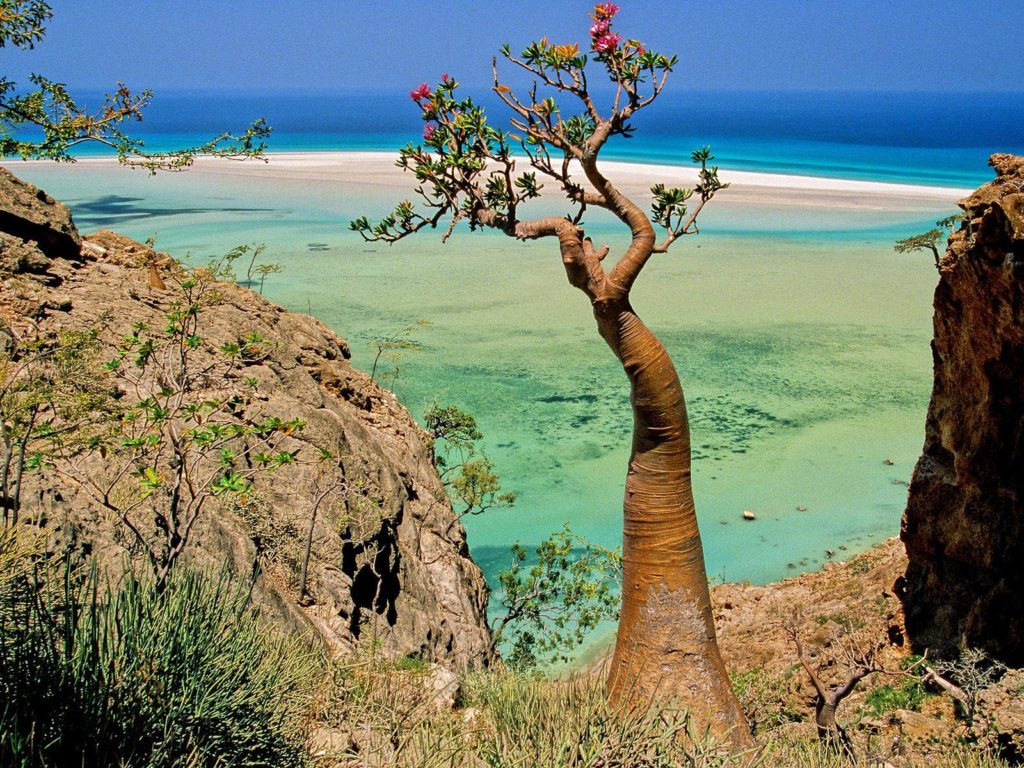
A real fantasy island!
In Socotra, the quintessential plant is Dracaena cinnabari, the dragon’s blood tree, a succulent. It looks like an upturned umbrella and great forests of this strange species can be seen on the rocky slopes of the island´s mountainous interior. It is said that Romans traveled to Socotra to acquire the tree’s blood-red sap, which they used as a disinfectant when they treated wounded gladiators.
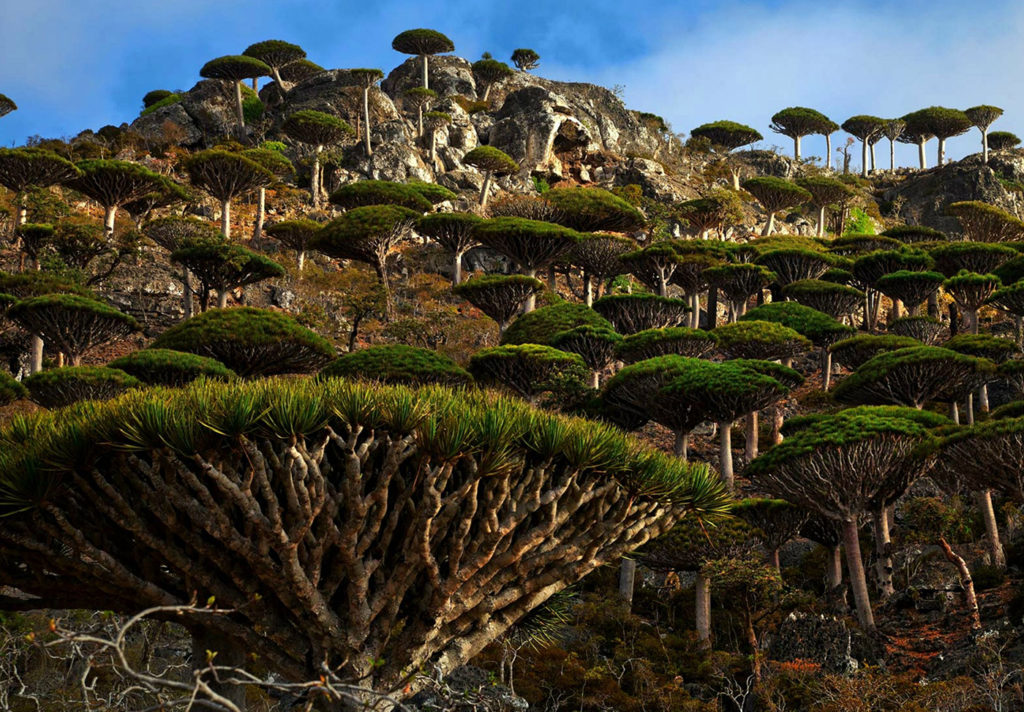
The strangely shaped bottle tree – its trunk resembles the distended leg of an elephant – is also found all over the island. It seems to grow everywhere and clusters can often be seen clinging to steep cliffs like watching sentinels. It is also known as the desert rose, as after the monsoon rains it produces shocking pink flowers.

There are also forests of frankincense trees. Their burnt sap releases a strong fragrance and was used in ancient Egypt to treat the bodies of the dead. Inscriptions describe how terraces of the trees were cultivated here to meet the demands of this lucrative trade.

The harsh, often dry conditions on the island don’t support many animals, but vultures, especially white Egyptian vultures with their bright yellow beaks, seem to be everywhere. They congregate wherever people are eating, to scavenge leftovers or squat on the low stone houses waiting for their next meal.

The rugged mountains in the center of Socotra are often enveloped in a misty shroud, which gives the highlands a completely different feel to that of the arid plain encircling them. They are green even during the dry summer months, so this is the time to visit the island if you want to see the greatest contrasts of desert and lush vegetation.
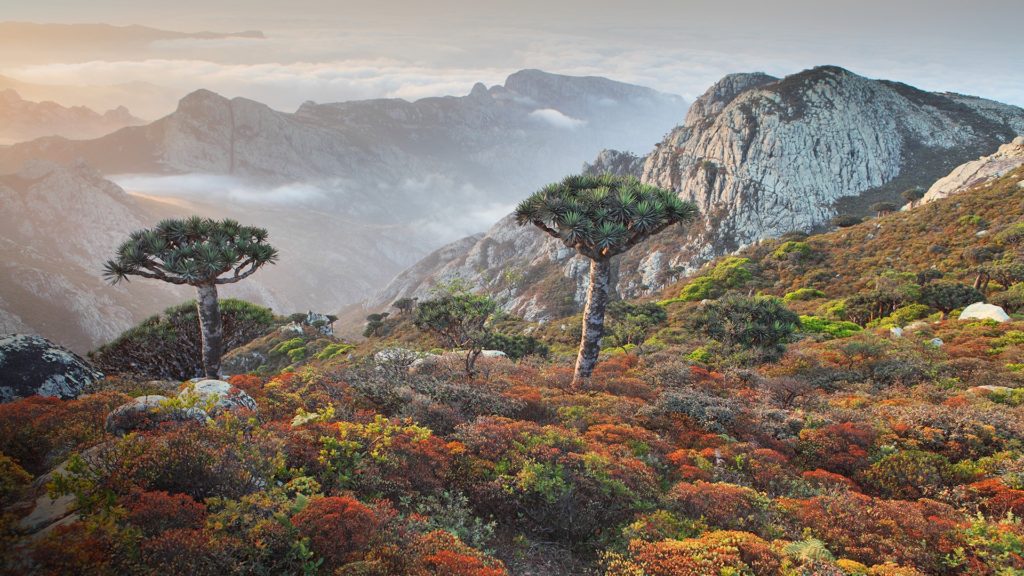
The coast is virtually unspoiled, with long stretches of white sand. At Erher, on the east of the island, great dunes have formed against high craggy cliffs. The beach extends for kilometers, broken only by fantastically eroded rocks. The shore fringes a brilliant aquamarine lagoon and perhaps you’ll be able to see a large pod of dolphins mooching quietly along, just a meter or so away. Nearby, and set into one of the cliffs is the immense Hug Cave; more than 3 km long, it is lined with ornate stalactites and stalagmites. Unlike many caves, it is open and airy and it is possible to walk almost its entire length without stopping.
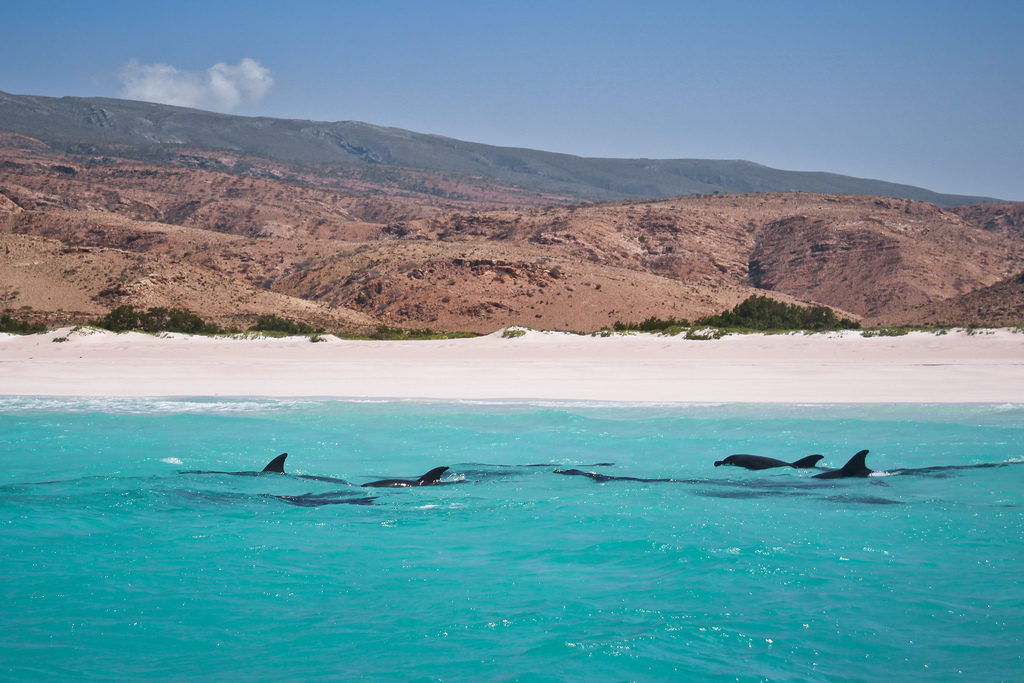
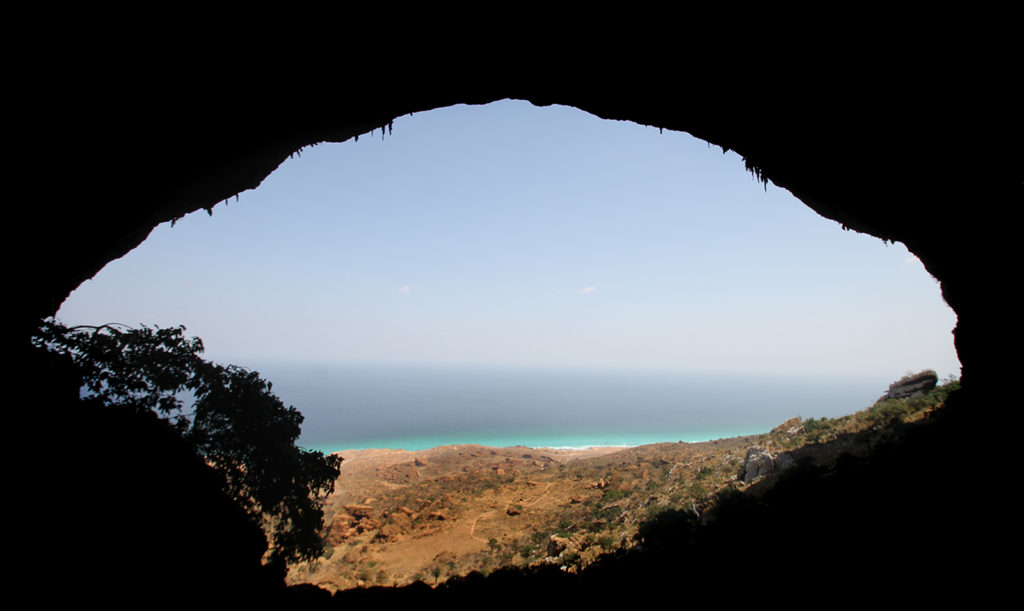
Tourism is very much in its infancy here. The airport was built only in 1999 and apart from a couple of guest houses in Hadibo, the main town, it is a case of camping – or enjoying the hospitality of the local people, and they are certainly hospitable. Many of Socotra´s 40.000 or so inhabitants live in isolated villages in the deep fertile valleys of its central mountains, and as you travel around the island, there’s no doubt that you will often be invited to share their meals. Although most people speak Socotri, the local Semitic language, Arabic is also widely spoken.

Socotra is part of the Republic of Yemen, and if you fly to the island, you will have to spend a night in Sana’a, the Yemeni capital. Don’t miss the chance to visit its old town, home to what are reputed to be the world’s first skyscrapers. These 800-year-old brick buildings soar up to nine storeys and some even incorporate hotels. All the men walk around with traditional curved Jambiya daggers – and often mobile phones – attached to their belts.
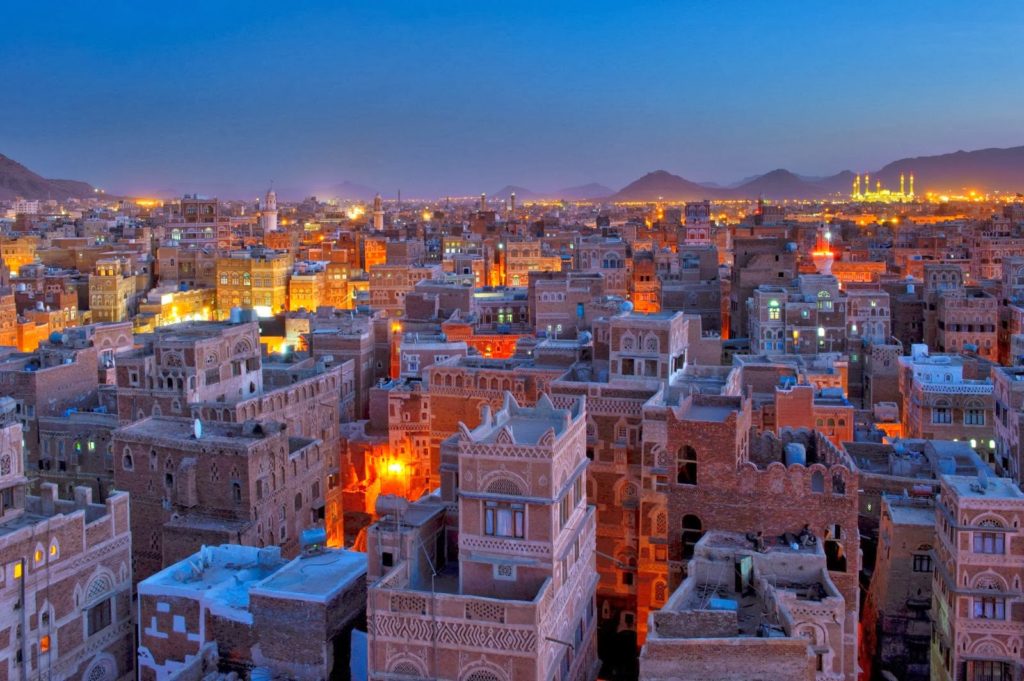
If you loved this article or found it useful, don’t forget to share it with your adventurous and travel-hacking friends! If you want more post like this, follow us on Youtube, Instagram, Pinterest, Twitter or Facebook and subscribe to our newsletter!

